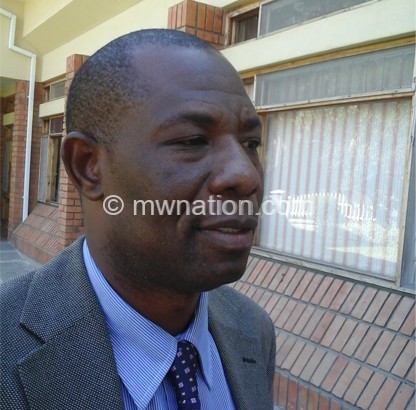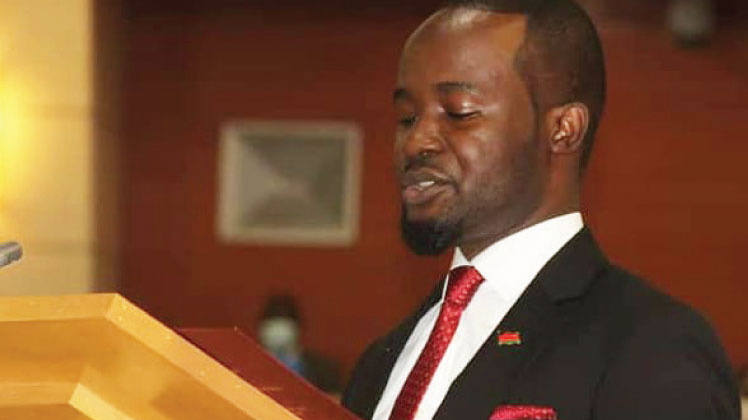Erasing ‘sad-ink’ from SADC
Call it a glamorous Southern African Development Community (Sadc) summit, pregnant with a splendid atmosphere.
This is how the 41st Ordinary Summit of Heads of State and Government Malawi hosted in Lilongwe could best be described.
But behind such glamour, there lies an invisible sad-ink inscribed on the stunning Sadc logo.
Many ordinary people from the 16-member regional trade bloc, with a combined population of about 350 million, cannot see this sad-ink, but can only feel its pinch in their day-to-day lives.

Let us first of all unpack some of the key issues that have gripped the Sadc family for so long and this is simply the sad-ink, which this reporter has collectively termed and needs to be rooted out if Sadc is to meaningfully achieve its vision and mission.
Sadc member States continue to face a myriad of social, development, economic, trade, education, health, diplomatic, defence, security and political challenges.
Tellingly, most of these challenges cannot be tackled effectively by individual members.
In line with its mandate of strengthening regional integration throughout southern Africa, Sadc promotes macroeconomic convergence in the region.
This process advocates that member States move towards a common macroeconomic climate with similar policies on inflation, public debts, budget deficits and current accounts.
However, year in, year out this remains a pipe dream for the region. Data indicates that regional inflation rates increased to an average of 49 percent in 2020 from an average of 16.4 percent in 2019.
It is either because Covid-19 has induced imported inflation or signal the fact that monetary policies remain ineffective to thwart spiraling cost push or demand pull types of inflation. Public debt again is also haywire. It increased from 56.3 percent of GDP in 2019 to 67.1 percent of GDP in 2020. The increasing public debt levels automatically puts additional burden to member States’ resources as debt service costs increase.
Debt burden is expected to worsen for Sadc member States with public debt forecasted to further increase to 69 percent of GDP in 2021.
This is no sweet news to all Sadc Heads of State and Government as it means a breach of the 60 percent regional benchmark within the macroeconomic convergence criteria. And Malawi, which is hosting the new chairmanship for Sadc is also a culprit on the same as her public debt is signalling unsustainable trajectory at 54 percent of GDP, of course way below the 65 percent of GDP ratio in June 2020, thanks to the recent rebasing of GDP.
The exercise has seen the country’s nominal GDP increasing from $8 billion to $10.9 billion. Data also show that Sadc region GDP also contracted by 4.8 percent in 2020 which is lower than a positive growth rate of 2.1 percent recorded in 2019.
The Sadc fiscal sector is also panting with fists of fury from all angles. The sector is unconscious. Statistics show that the Sadc fiscal deficit deteriorated from 3.0 percent of GDP in 2019 to 7.3 percent of GDP in 2020. Of the 16 countries, only Angola, DRC, Lesotho, Madagascar, Tanzania and Zimbabwe achieved the regional fiscal deficit target of three percent of GDP in 2020.
The rest of the members States, including Malawi are battling with yawning fiscal gaps. Malawi’s fiscal deficit in the 2020/21 budget, for example, was K810 billion, or nine percent of GDP, three times the three percent Sadc target. Regionally, this is a result of synchronised increases in government expenditure to support the recovery from the impact of Covid-19.
Outgoing Sadc executive secretary Stergomena Lawrence Tax confesses that the region is struggling to converge its macroeconomic indicators and that is a ‘sad-ink ‘which needs to be eliminated at all cost.
During the official opening of the Sadc council of ministers on August 14 2021, Tax said: “With regard to macroeconomic convergence, a number of member States were unable to meet the agreed macroeconomic convergence criteria.”
The business-operating environment in most Sadc countries remains hostile. At the just-ended summit, it was also repeatedly acknowledged that member States still need to improve their operating business environment as exposed annually by the ease of doing business indicators.
Most Sadc States, including Malawi, still rank lowly according to the Global Competitiveness Report for 2019 compared to other countries on the World Economic Forum’s Competitiveness Index. This also applies to the Enabling Trade Index which also shows that most countries prefer trading with countries outside Sadc. This is reflected by intra-Sadc figure which remain low at 19 percent.
This is the case despite the fact that the region has harmonised a total of 111 standards, 30 percent of which are available in the three Sadc official languages, which implies that these standards are recognised as equivalent in all the Sadc member States.
Professor of economics at Chancellor College Ronald Mangani has no kind words on the status quo within Sadc.
“We talk, we talk and we talk but when it comes to implementation, zero. It’s not the Malawi characteristic but the whole region…Do you think we are ready to industrialise? No,” he says.
He is talking from experience, having authored a lot of economics papers on such topical issues and having worked as Secretary to Treasury between 2014 and 2017, among others.
Mangani also takes a swipe at Sadc, blaming it for formulating a litany of protocols but yielding no tangible results, according to available data.
But Sadc needs to change its approach urgently on matters of trade, industrialisation and economic transformation. To ensure Sadc economies are highly competitive, there is a need for the strengthening of both the macroeconomic and microeconomic environments, an international development expert Peter Yakobe suggests.
“A healthy and competitive macroeconomic environment is critical as it helps to optimise the microeconomic capability and sophistication of domestic production, service structures, and enhanced overall productivity,” he says.
The region recently finalised the development of Sadc Employment and Labour Policy Framework as well as the Sadc Youth Employment Policy Framework. The instruments are expected to guide member States on key priorities in addressing decent work deficits. The just-ended summit, however, admitted that both unemployment and underemployment continue to undermine prospects for productive structural and poverty eradication in the region. The indaba also acknowledged glaring gaps in youth development and empowerment, most notably on account of poor sexual and reproductive health of young people, limited access to secondary education as well as predominance of low-productivity enterprises in the informal sector.
All these misfortunes are but an epitome of ‘sad-ink’ within Sadc that needs urgent dismantling and the new Sadc chairperson himself Lazarus Chakwera has no room for complacency.
He needs to face and pummel all the Sadc bottlenecks with sense of urgency. Fortunately, Chakwera is aware of a mammoth task ahead of him.
Said Chakwera: “This year’s summit is of particular significance as it comes at a time when the Sadc region, just like any other part of the world, has been hit hard by the Covid-19 pandemic.
“Since the pandemic has either stalled or reversed the progress we had made in our regional integration agenda, gains that took years and sweat to achieve, we gather here with a shared sense of urgency to revitalise our economies.”
Despite the ‘sad-ink’ smearing and darkening the Sadc landscape, not all is lost as the region is also registering some notable gains that need to be cherished and nurtured.
The region has made notable strides in terms of regional connectivity, access to energy, financial integration and inclusion and mobile penetration as well as general infrastructure development.
In the energy sector, for example, during the period 2014 to 2020, the commissioned power generation in the region increased by 19 738 megawatts (MW), translating to 90 percent of the targeted capacity of 22 000MW.
Access to electricity at weighted average also increased from 36 percent in 2014/2015 to more than 50 percent in 2020/2021.
The target is to reach at least 85 percent by 2030 in line with the Regional Indicative Strategic Development Plan 2020-2030.
Worth appreciating is also a revelation that Sadc mobile penetration has increased from 60 percent in 2012, and currently stands at 77.4 percent, with five member states exceeding 100 percent mobile penetration.
But the fact remains that the challenges and weaknesses gripping Sadc continue to outweigh the strength and opportunities.
Time is now ripe to delete and wipe-off this sad-ink and this is Chakwera’s immediate task.


